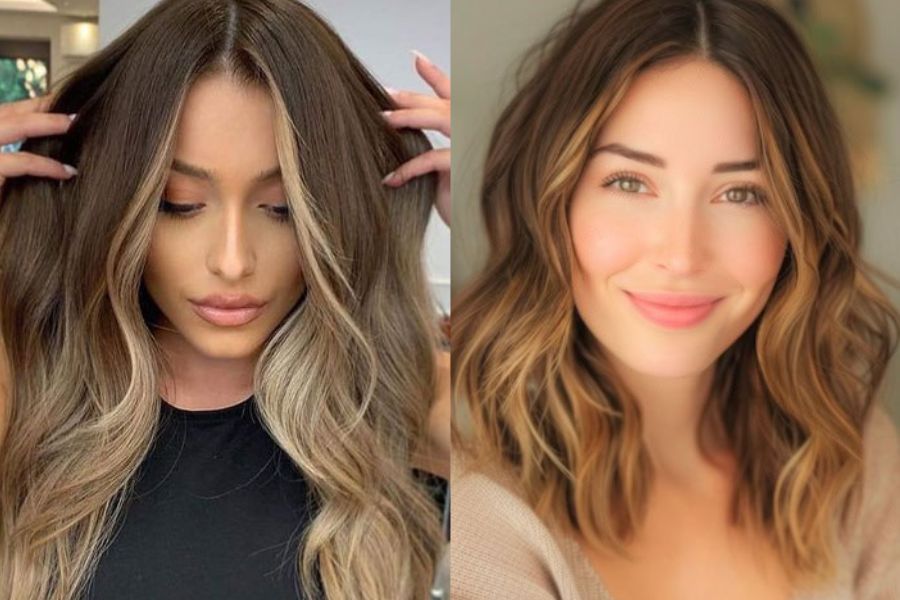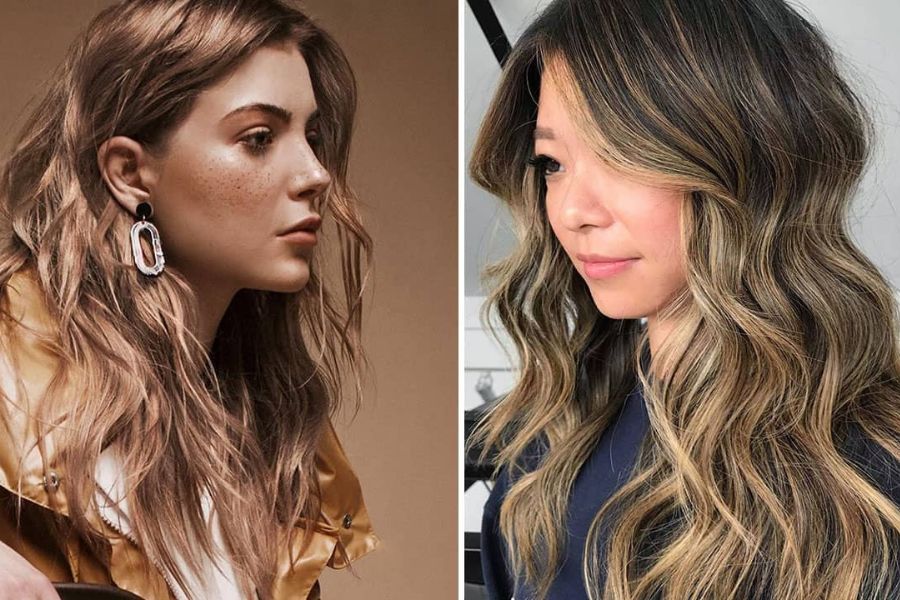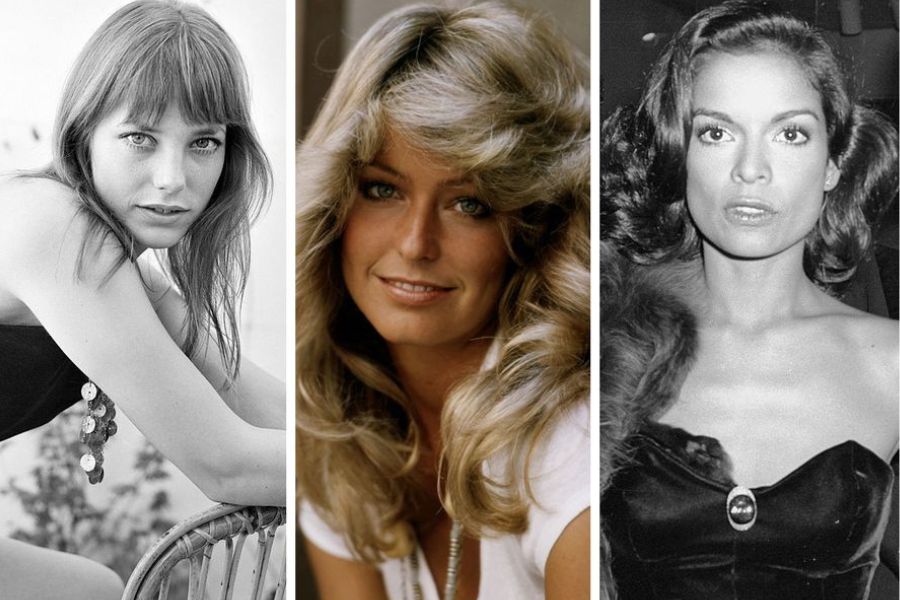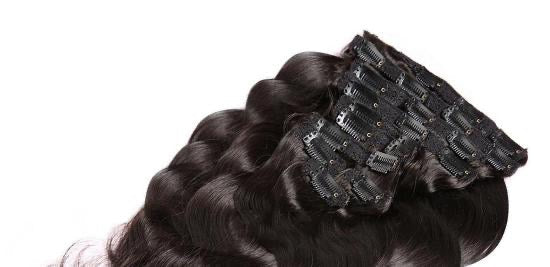Difference Between Curly and Wavy Hair: How To Differentiate

Key Takeaways
- Curl pattern is the clearest difference between curly and wavy hair. Wavy hair forms soft S-shaped bends, while curly hair creates springy spirals or corkscrews from root to tip, offering more volume and structure.
- Curly hair needs more moisture and structured care. Due to its spiral shape, curly hair dries out faster and frizzes more easily. It requires deep hydration, curl creams, and less frequent washing than wavy hair.
- Wavy hair is more flexible for heat styling and daily wear. This type of hair is easier to straighten, curl, and manage with light products. Curly hair, while more voluminous, requires careful styling and high moisture maintenance.

Difference between curly and wavy hair
What Is Wavy Hair?
Wavy hair sits beautifully between straight and curly hair on the texture spectrum. It doesn't lie completely flat like straight hair, but it also doesn't form the tight spirals characteristic of curly hair.
Instead, wavy hair creates those coveted, loose, S-shaped bends throughout its length, giving it natural movement and body.
Think of those effortless beach waves you see in magazines—that tousled, lived-in texture that looks full of movement but remains fairly manageable. That's the essence of wavy hair.

The common characteristics of this type of hair include:
- Natural S-Shape Pattern: Wavy hair forms gentle S-curves rather than tight spirals, creating a flowing, serpentine pattern that catches light beautifully.
- Root-to-End Variation: One of the most telling signs of wavy hair is that it's typically flatter at the roots and becomes progressively wavier toward the ends. This creates a natural cascade effect.
- Versatile Density: Wavy hair can range from fine and delicate to thick and voluminous, making it one of the most diverse hair types.
- Humidity Sensitivity: Wavy hair tends to respond to humidity by becoming frizzier or losing its pattern, which is why many people with wavy hair struggle with consistency.
- Styling Flexibility: This hair type holds styles well with light products and can easily be enhanced, straightened, or curled depending on your desired look.
Wavy hair is categorized as Type 2 in the widely used hair typing system, and it's further broken down into three subcategories:
- Type 2A: Very loose, barely-there waves that are straighter at the roots. This hair often looks straight when wet but develops subtle waves as it dries.
- Type 2B: More defined S-shaped waves with noticeable volume and texture. This is what most people picture when they think of "wavy hair."
- Type 2C: The thickest, most pronounced wavy pattern with stronger waves, more body, and increased tendency toward frizz.

Wavy hair serves as an excellent foundation for styling. Its natural texture means you can easily enhance the waves for a beachy look, straighten it for sleek styles, or add curls for more defined texture.
What Is Curly Hair?
Curly hair is characterized by tighter, more defined ringlets or corkscrews that form distinct spiral patterns. Unlike wavy hair, which often appears flatter at the scalp, curly hair typically maintains its volume and curl pattern from roots to ends, creating that signature bouncy, voluminous appearance.
The spiral structure of curly hair is what gives it its distinctive look and also creates some of its unique care challenges.

Key traits of curly hair:
- Defined Spiral Pattern: Curly hair forms clear loops, spirals, or corkscrews rather than loose waves. These curls are consistent and structured.
- Root-to-Tip Volume: Unlike wavy hair, curly hair maintains its pattern and volume from the scalp to the ends, creating natural fullness throughout.
- Coarser Texture: Curly hair is generally thicker and coarser in texture compared to wavy hair, giving it more structure and weight.
- Higher Moisture Needs: The curved shape of curly hair makes it more challenging for natural oils to travel down the hair shaft, leading to increased dryness and a greater need for intensive moisturizing.
- Frizz Tendency: Without proper hydration and care, curly hair can become very frizzy, losing its definition and becoming unmanageable.
- Shrinkage Factor: Curly hair often appears shorter than it actually is due to its tight curl pattern, which significantly reduces its apparent length.
Curly hair falls under Type 3 in the hair classification system:
- Type 3A: Loose, soft curls that resemble large spirals. These curls are usually easy to straighten and have a natural shine.
- Type 3B: Medium-sized, springy curls with more volume and definition. This type has a fuller appearance and more resistance to straightening.
- Type 3C: Tight, densely packed curls that border on coily hair. These curls have the most volume and require the most intensive care routine.

The unique structure of curly hair means that natural oils have difficulty traveling down the curved hair shaft, which explains why curly hair often feels drier than other hair types and requires rich, moisturizing products to maintain its health and bounce.
The Real Difference Between Curly and Wavy Hair
Now let's break down the difference between curly and wavy hair in clear, practical terms.
While both textures add natural movement and interest to your hair, they have distinct characteristics that affect everything from daily styling to product selection. Understanding these differences is crucial for achieving proper hair care and styling success.
1. Visual and Structural Differences
The most obvious difference lies in the curl pattern itself. Wavy hair creates loose S-shaped curves that flow gently from root to tip, while curly hair forms distinct spirals, loops, or corkscrews that maintain their shape consistently throughout the hair strand. When you look at wavy hair, it has a more relaxed, flowing appearance that cascades naturally.
Curly hair, on the other hand, has a more structured, bouncy appearance with defined ringlets that spring back when stretched.
|
Feature |
Wavy Hair |
Curly Hair |
|
Curl Pattern |
Loose S-shape |
Spiral or ringlet pattern |
|
Root Volume |
Often flat at roots |
Usually voluminous from roots |
|
Overall Texture |
Fine to medium |
Medium to coarse |
|
Moisture Requirements |
Moderate hydration needs |
High moisture requirements |
|
Styling Flexibility |
Easily straightened or enhanced |
Needs more prep for definition |
|
Frizz Tendency |
Moderate, mainly in humidity |
High, especially when dry |
|
Hair Type Classification |
Type 2 (2A, 2B, 2C) |
Type 3 (3A, 3B, 3C) |
Livicor Hair offers an extensive range of both curly and wavy textures, making it easier to find the perfect match for your natural hair or achieve your desired look while understanding exactly what makes each texture unique.
2. Physical Feel and Texture Differences
When you run your fingers through wavy hair, it typically feels softer and more flexible to the touch. The waves create a flowing quality that moves easily and feels lightweight, even when the hair is thick. You can often stretch a wavy section, and it will bounce back to a looser wave pattern.
Curly hair usually feels more substantial and structured when touched. Individual curls have definition and spring, especially when you gently stretch a curl and release it, it snaps back to its original spiral shape. The hair often feels denser overall due to the way the curls create volume and the typically coarser texture of curly hair strands.

3. How They Behave When Wet vs Dry
This is where the difference between curly and wavy hair becomes particularly noticeable. Wavy hair often looks much straighter when wet, with the wave pattern becoming more apparent as it dries. Some Type 2A wavy hair might even appear completely straight when soaking wet, only revealing its wavy nature during the drying process.
Curly hair, however, maintains much of its curl pattern even when wet. While the curls may stretch out slightly under the weight of water, the spiral structure remains visible. As curly hair dries, the curls become more defined and tighter, often appearing to shrink significantly in length.
4. Styling Behavior and Flexibility
Wavy hair is like the chameleon of hair textures. It's incredibly adaptable and forgiving when it comes to styling. You can temporarily straighten wavy hair with heat tools and achieve sleek, smooth results that last.
You can also enhance the natural waves with texturizing products for more defined beach waves, or add curls with a curling iron for a completely different look. The hair readily accepts these temporary changes and bounces back to its natural state after washing.

Curly hair has much more "personality" and can be significantly more stubborn about changing its natural pattern.
While you can straighten curly hair, it requires more heat, time, and product to achieve smooth results, and the style often doesn't last as long, especially in humid conditions. Curly hair tends to "remember" its natural pattern and will gradually revert back to its spiral shape, particularly when exposed to moisture or humidity.
5. Response to Weather and Environmental Factors
The way wavy and curly hair respond to environmental conditions reveals another key difference.
Wavy hair typically performs well in various weather conditions but can lose its definition in high humidity, becoming either frizzier or straighter, depending on the individual's hair type. Light rain or moisture might enhance the waves slightly, but heavy humidity often leads to frizz or complete loss of pattern.
Curly hair is significantly more susceptible to environmental factors. Humidity often makes curly hair expand and become frizzier, while extremely dry conditions can cause the curls to become brittle and lose their bounce.
However, some light moisture can actually enhance curl definition if the hair is properly moisturized.
6. Maintenance and Care Requirements
The difference between curly and wavy hair becomes most apparent in their daily care needs. Wavy hair typically thrives with lighter products, such as mousse, light creams, or sea salt sprays that enhance texture without weighing the hair down. Over-conditioning or using heavy products can actually flatten wavy hair and reduce its natural movement.
Wavy hair also tolerates more frequent washing than curly hair. Many people with wavy hair can wash every other day or every few days without issues, and the hair often looks better with some natural oils rather than being completely clean.
Curly hair, on the other hand, craves rich, heavy moisturizers, curl-defining creams, and protective styling techniques.
It often benefits from less frequent washing, sometimes only once or twice a week, because the spiral structure makes it difficult for natural oils to travel down the hair shaft. Curly hair requires more intensive deep conditioning treatments and often needs leave-in products for daily moisture maintenance.

7. Heat Styling Differences
When it comes to heat styling, the differences are significant. Wavy hair generally responds well to moderate heat and can be styled with standard tools and techniques. A regular blow dryer, flat iron, or curling iron, used on medium heat settings, usually produces good results without excessive damage.
Curly hair requires more careful heat styling approaches. Diffusing on low heat is often preferred over regular blow drying to maintain curl definition. When straightening curly hair, it typically requires higher heat settings and more passes with the flat iron, which increases the risk of damage. Many people with curly hair adopt heat-free styling methods to preserve their hair's health and natural curl pattern.
8. Growth and Length Appearance
Another fascinating difference is how length appears on wavy versus curly hair. Wavy hair shows its true length more accurately because the gentle S-curves don't significantly compress the hair's length. A wavy-haired person with 20 inches of hair will appear to have long hair that reaches close to its actual measured length.
Curly hair experiences significant shrinkage due to the tight spiral pattern. Someone with curly hair that measures 20 inches when stretched might appear to have shoulder-length hair because the curls compress the apparent length by 30-50% or even more, depending on the tightness of the curl pattern.
9. Product Absorption and Distribution
The way hair products behave on wavy versus curly hair also differs significantly. Wavy hair's looser pattern allows products to distribute more evenly throughout the hair shaft. Light products, such as mousses and sprays, can easily coat wavy hair without creating buildup, and the hair responds well to even application techniques.
Curly hair's spiral structure creates more surface area and can absorb more product, but it also makes even distribution more challenging. Products can get trapped in the curves of the curls, leading to uneven application or buildup in certain areas. This is why many individuals with curly hair use techniques like "praying hands" or "scrunching" to ensure even product distribution.







Comments